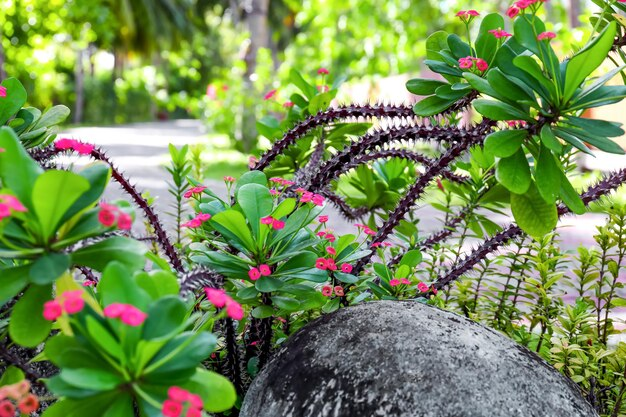The Best Native Plants for Landscaping in Different U.S. Regions
- Staff Desk
- Mar 19
- 4 min read

Landscaping with native plants is an excellent way to create a beautiful, sustainable, and low-maintenance garden while supporting local ecosystems. Native plants are well adapted to their respective climates and soils, making them resilient to drought, pests, and diseases. This guide explores the best native plants for landscaping across different U.S. regions.
Northeast (New England & Mid-Atlantic)

The Northeast region has a temperate climate with cold winters and humid summers. Native plants here thrive in a variety of conditions, from coastal environments to dense forests.
Top Native Plants:
Eastern Redbud (Cercis canadensis) – A small tree with pink blossoms in early spring, attracting pollinators.
Sugar Maple (Acer saccharum) – Known for its brilliant fall foliage and contribution to maple syrup production.
Black-Eyed Susan (Rudbeckia hirta) – A hardy, bright yellow wildflower that attracts bees and butterflies.
New England Aster (Symphyotrichum novae-angliae) – A late-blooming purple flower that supports pollinators in fall.
Winterberry (Ilex verticillata) – A deciduous holly producing vibrant red berries that persist through winter.
Reference:
U.S. Forest Service. (2023). Native Trees and Shrubs for the Northeast. Retrieved from https://www.fs.usda.gov
Southeast (Florida, Georgia, Carolinas)

With a warm, humid climate, the Southeast region benefits from plants that thrive in moisture-rich and subtropical conditions.
Top Native Plants:
Southern Magnolia (Magnolia grandiflora) – A large evergreen tree with fragrant white flowers.
Saw Palmetto (Serenoa repens) – A slow-growing, drought-resistant palm shrub.
Coral Honeysuckle (Lonicera sempervirens) – A vine with tubular red flowers that attract hummingbirds.
Muhly Grass (Muhlenbergia capillaris) – Ornamental grass producing stunning pink plumes.
Swamp Milkweed (Asclepias incarnata) – Essential for monarch butterflies and thrives in wet soils.
Reference:
Florida Native Plant Society. (2023). Best Native Plants for Landscaping in the Southeast. Retrieved from https://www.fnps.org
Midwest (Great Plains, Ohio Valley)

The Midwest experiences a range of climates from humid summers to harsh winters. Prairie plants dominate this region.
Top Native Plants:
Purple Coneflower (Echinacea purpurea) – A drought-resistant perennial attracting bees and butterflies.
Little Bluestem (Schizachyrium scoparium) – A native grass with blue-green foliage that turns red in fall.
Bur Oak (Quercus macrocarpa) – A tough, drought-tolerant oak providing habitat for wildlife.
Wild Bergamot (Monarda fistulosa) – A fragrant wildflower that attracts pollinators.
Prairie Dropseed (Sporobolus heterolepis) – An ornamental grass with fine-textured foliage.
Reference:
Midwest Native Plant Society. (2023). Native Plants for Prairie and Grassland Landscaping. Retrieved from https://www.midwestnatives.org
Southwest (Texas, Arizona, New Mexico)

With arid conditions and intense heat, drought-resistant plants thrive in this region.
Top Native Plants:
Desert Willow (Chilopsis linearis) – A small tree with pink orchid-like flowers.
Texas Sage (Leucophyllum frutescens) – A heat-tolerant shrub with silver foliage and purple flowers.
Red Yucca (Hesperaloe parviflora) – A succulent producing striking red flower spikes.
Apache Plume (Fallugia paradoxa) – A hardy shrub with white flowers and feathery seed heads.
Soaptree Yucca (Yucca elata) – A tall, drought-resistant yucca ideal for desert landscapes.
Reference:
Lady Bird Johnson Wildflower Center. (2023). Drought-Resistant Native Plants for the Southwest. Retrieved from https://www.wildflower.org
West Coast (California, Oregon, Washington)

The West Coast features a Mediterranean climate with wet winters and dry summers, requiring plants that can handle seasonal drought.
Top Native Plants:
California Poppy (Eschscholzia californica) – The iconic bright orange state flower.
Manzanita (Arctostaphylos spp.) – A drought-tolerant shrub with red bark and pink flowers.
Douglas Fir (Pseudotsuga menziesii) – A native evergreen tree in the Pacific Northwest.
Oregon Grape (Mahonia aquifolium) – A shrub with holly-like leaves and yellow flowers.
Sword Fern (Polystichum munitum) – A shade-loving, drought-tolerant fern.
Reference:
California Native Plant Society. (2023). Best Native Plants for West Coast Landscaping. Retrieved from https://www.cnps.org
Mountain West (Colorado, Utah, Montana)

This region includes high-altitude climates with cold winters and dry summers.
Top Native Plants:
Rocky Mountain Columbine****West Coast (California, Oregon, Washington)
The West Coast features a Mediterranean climate with wet winters and dry summers, requiring plants that can handle seasonal drought.
Top Native Plants:
California Poppy (Eschscholzia californica) – The iconic bright orange state flower.
Manzanita (Arctostaphylos spp.) – A drought-tolerant shrub with red bark and pink flowers.
Douglas Fir (Pseudotsuga menziesii) – A native evergreen tree in the Pacific Northwest.
Oregon Grape (Mahonia aquifolium) – A shrub with holly-like leaves and yellow flowers.
Sword Fern (Polystichum munitum) – A shade-loving, drought-tolerant fern.
Reference:
California Native Plant Society. (2023). Best Native Plants for West Coast Landscaping. Retrieved from https://www.cnps.org
(Aquilegia coerulea)** – A blue and white wildflower.

Ponderosa Pine (Pinus ponderosa) – A towering conifer with distinctive bark.
Aspen (Populus tremuloides) – A tree known for its golden fall foliage.
Serviceberry (Amelanchier alnifolia) – Produces edible berries and spring blossoms.
Blue Flax (Linum lewisii) – A delicate blue wildflower thriving in poor soil.
Reference:
Colorado Native Plant Society. (2023). Native Plants for High-Altitude Landscapes. Retrieved from https://www.conps.org
Conclusion
Incorporating native plants into your landscape enhances biodiversity, conserves water, and provides habitat for wildlife. By choosing species suited to your region, you can create a resilient and thriving garden with minimal maintenance.
Sources & Further Reading:
National Wildlife Federation. (2023). Guide to Native Plants by Region. Retrieved from https://www.nwf.org
U.S. Department of Agriculture. (2023). Native Plant Database. Retrieved from https://plants.usda.gov
By selecting native plants, you not only create a stunning landscape but also contribute to a healthier environment!



Comments